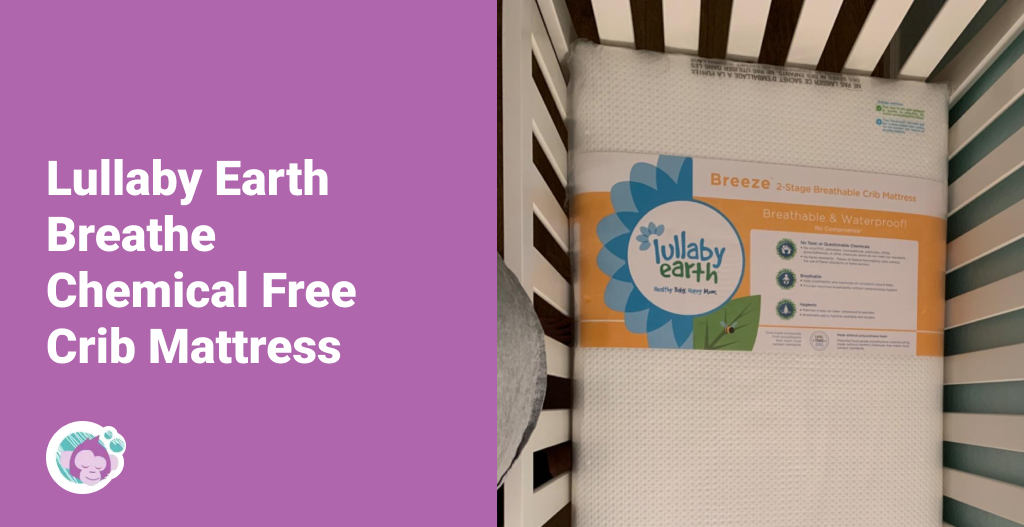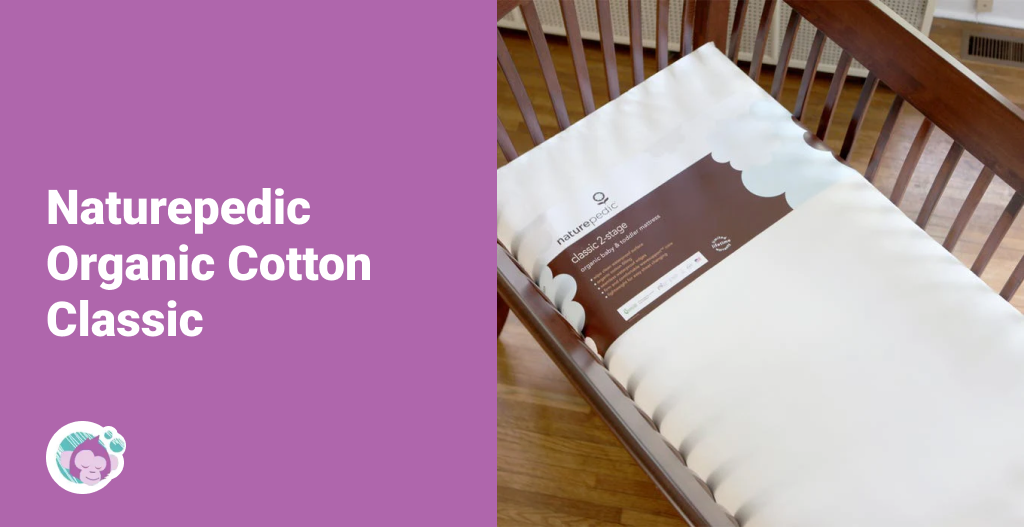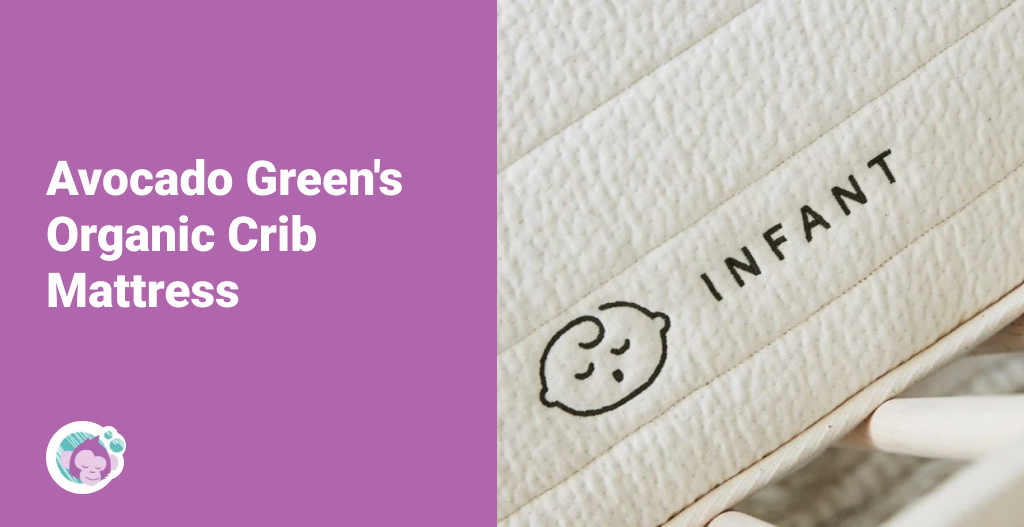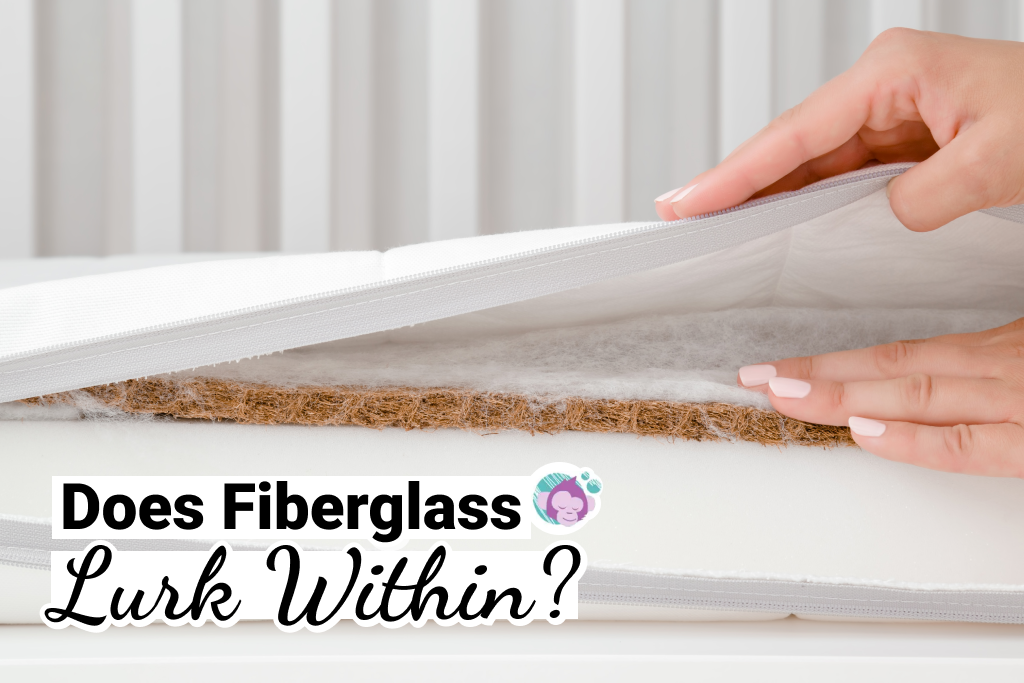Explore the truth about fiberglass in crib mattresses, understand its role and potential risks, and discover safe, non-toxic alternatives for your baby’s sleep.
I remember the time I was preparing the nursery for my firstborn daughter. I was as nervous as a long-tailed cat in a room full of rocking chairs. I wanted everything to be perfect, especially the mattress.
If you’re like me, you’ve probably spent countless hours researching the safest products for your little ones. As a dad of two, I’ve been down the rabbit hole of baby products more times than I can count. Especially when I first heard about fiberglass in crib mattresses.
Not all crib mattresses employ fiberglass to meet non-flammability standards. Although generally safe when encapsulated within the mattress, loose fiberglass exposure can present potential health risks. Despite fiberglass being a common material in some mattresses, crib mattresses offer non-toxic alternatives for parents seeking a safer sleep environment for their babies.
Whether you’re considering innerspring or foam mattresses for your baby’s crib, you’ve likely come across the term ‘fiberglass.’ It’s a common component in many mattresses, but is it dangerous? Should we be concerned about it? And most importantly, are there fiberglass-free mattress options available?
This article will cover the following:
- Do All Mattresses Have Fiberglass
- Why is There Fiberglass in Mattresses
- Is Fiberglass in Mattresses Dangerous
- Are There Fiberglass-Free Crib Mattresses Available?
- How to Get Rid of Fiberglass From Mattress
- Conclusion
So, buckle up, and Let’s ensure our little ones’ dreams are as sweet and safe as possible.
Uncertain about which mattress to get? Take a look at this list of the best crib mattresses. I have put lots of hours into this guide, for you to find the ideal mattress for your baby!
Do All Mattresses Have Fiberglass?
Not all mattresses contain fiberglass. It’s a common material, sure, but it’s not universal. Some manufacturers use fiberglass in their mattresses, particularly as a fire barrier. But others might use different materials to meet flammability standards.
Manufacturers can use various materials to meet flammability standards in crib mattresses.
These materials can range from fire-resistant fibers, woven into the fabric of the mattress cover or incorporated into the mattress itself, to fire barriers, which are layers of material designed to resist ignition. Some manufacturers opt for chemical flame retardants, which are added to the materials in the mattress to make them less likely to burn. There are also inherently fire-resistant materials, such as certain types of foam, that are naturally less flammable and can be used without additional flame retardants.
So, while innerspring and foam mattresses can contain fiberglass, it’s not a certainty. The specific materials used can vary widely from one mattress to another.
Why is There Fiberglass in Mattresses?
Crib mattresses are a bit like a mystery wrapped in an enigma, aren’t they? They’re usually made up of several layers. The fiberglass can be found between the core and outer layers of the insulation layer.
Fiberglass in mattresses? Sounds like a prickly situation. But it’s actually more common than you might think.
Let’s find out why and if it’s cause for concern.
- Fire Resistance: Fiberglass is non-combustible, meaning it doesn’t burn. Well, fiberglass in a mattress is like a built-in fire extinguisher. If a fire starts, the fiberglass can help slow its spread, giving you more time to react. In the US, mattresses must pass certain flammability tests. Fiberglass, being non-combustible, helps them do that.
- Strength and Durability: Fiberglass also adds strength and durability to the mattress. Fiberglass strands are incredibly strong and don’t break down easily, which can help the mattress maintain its shape and support over time.
- Cost-Effectiveness: Lastly, fiberglass is often a cost-effective choice for manufacturers.
What Does Fiberglass Look Like on Mattress?
Fiberglass in a mattress isn’t visible to the naked eye in its normal state. It’s integrated within the materials of the mattress, usually in the inner layer for fire resistance.
However, if a fiberglass-containing mattress is damaged or the outer cover is removed (which is not recommended), you may see a layer that looks somewhat like a white, shiny, or sparkly web. This web-like substance is composed of tiny, thin strands of fiberglass.
It can look like dust or tiny glass threads and spread quickly and stick to surfaces if disturbed. This is why it’s crucial not to remove the outer cover of mattresses containing fiberglass. It can be very difficult to clean up and may pose health risks.
Is Fiberglass in Mattresses Dangerous?
Fiberglass is a strong, durable material but can also be a troublemaker. If the mattress cover is removed or damaged, fiberglass can escape. It’s like a cat let out of the bag. Once it’s out, it’s hard to get it back in.
As parents, we’re wired to worry. So, let’s address the elephant in the room.
The chance of your baby being exposed to loose fiberglass from their mattress is generally low. Fiberglass is typically used in the inner layers of a mattress and is contained within the mattress cover. If the mattress cover remains intact and not removed, the fiberglass should stay contained.
However, if the mattress cover is removed or damaged, there is a risk that fiberglass could escape.
Fiberglass particles can be inhaled or come into contact with skin if they become airborne. This can lead to eye, skin, and respiratory irritation. It’s like getting a bit of sand in your eye. Definitely something uncomfortable and irritating.
In some cases, prolonged exposure to fiberglass dust can lead to more serious health issues, like respiratory difficulties. It’s like being allergic to pollen. It might not seem like a big deal, but it can affect your quality of life over time.
But remember, the risk is primarily when fiberglass is not properly contained within the mattress. A durable, intact mattress cover is usually enough to prevent exposure.
Now, let’s see what the rulebook says about all this.
What Regulations Exist Regarding Fiberglass in Crib Mattresses?
Regarding crib mattresses, there are a few key regulations and standards to be aware of. It’s like the rulebook for a board game. It can seem not easy, but it ensures everyone plays fair.
All mattresses, including crib mattresses, must meet federal flammability standards in the US. These rules are designed to slow the spread of fire and give you more time to react in case of a fire. Fiberglass, being non-combustible, is one-way manufacturers meet these standards.
However, there aren’t specific regulations about using fiberglass in crib mattresses. It’s like the wild west. Manufacturers can use it if they choose to, as long as the product meets safety standards.
Any mattress sold in the US must have a label listing its materials. So, a mattress containing fiberglass should be listed on the label.
But what if we want to avoid fiberglass altogether? Let’s explore the alternatives.
Are There Fiberglass-Free Crib Mattresses Available?
If you’re like me, you might think, “Can’t we just ditch the fiberglass?” Well, let’s see what options we have for a fiberglass-free snooze. These alternatives can still meet flammability standards while offering other benefits.

Lullaby Earth’s Breeze Air Crib Mattress
Its unique design promotes air circulation, reducing the risk of overheating. It’s free of harmful chemicals, including flame retardants. The waterproof surface makes cleaning a breeze. It’s lightweight, too, making sheet changes less of a chore. Plus, it’s 100% recyclable, appealing to eco-conscious parents.
For more information, including price, check out the Lullaby Earth’s Breeze Air Crib Mattress on Amazon here!

Naturepedic’s Organic Cotton Classic Crib Mattress
This mattress is fiberglass-free and made from organic, breathable cotton. Organic cotton doesn’t contain harmful chemicals like pesticides or flame retardants. The firm support it provides ensures your baby sleeps safely. It’s also waterproof, which means easy cleanup.
For more information, including price, check out the Naturepedic official website here!

Avocado Green’s Organic Crib Mattress
It’s handmade with organic cotton, latex, and wool. These natural materials are hypoallergenic, resistant to microbes, and act as natural fire barriers. This means it doesn’t contain toxic fire-retardant chemicals. Its firm side for infants and a softer side for toddlers gives it longevity.
For more information, including price, check out the Avocado official website here!
How to Get Rid of Fiberglass From Mattress
Dealing with fiberglass shedding from a mattress can be quite a task. Here’s a basic step-by-step guide:
- First, clear the room of all people and pets.
- Wear protective gear: a long-sleeved shirt, gloves, goggles, and a face mask.
- Carefully vacuum the area, ideally with a HEPA filter vacuum, to pick up the loose particles.
- Wipe down all surfaces in the room with a damp cloth.
- Wash any affected clothes or bedding in warm water separately.
Avoid touching or disturbing the mattress further, as this can spread the fibers more. However, this cleanup process may not completely remove all fibers.
If you’re dealing with a mattress that contains fiberglass, a top-quality encasement is crucial. The “SafeRest Premium Zippered Mattress Encasement” is a fantastic choice. It’s lab-tested and certified to be bed-bug proof, which means it can also effectively contain fiberglass particles.
The micro-zipper technology ensures nothing can escape or enter, including fiberglass shards. It’s waterproof, keeping any spills away from the mattress, and it doesn’t alter the feel of your baby’s mattress.
Remember, if your mattress is already shedding fiberglass, it’s best to safely dispose of it and invest in a fiberglass-free mattress for your child’s safety.
Conclusion
While fiberglass is found in some crib mattresses for its fire-retardant properties, it can pose risks if disturbed. Therefore, it’s crucial to consider fiberglass-free alternatives, like the ones from Naturepedic, Avocado Green, and Lullaby Earth.
These brands provide safe, comfortable sleep for our little ones and assure peace of mind for us parents. If you encounter a fiberglass issue with an existing mattress, take proper steps to handle it, prioritizing safety above all else.
Ultimately, our children’s well-being is paramount. Making informed decisions about the products we bring into our homes is an important part of parenting.
The health and future of our kids are always worth the effort.
In general, cribs don’t come with a mattress, and you should consider ordering one simultaneously as the bed. Don’t worry; I have simplified the selection by creating this list of the best crib mattresses. Or perhaps you need help? Then you should visit this guide I made on choosing the ideal mattress for your baby crib.

